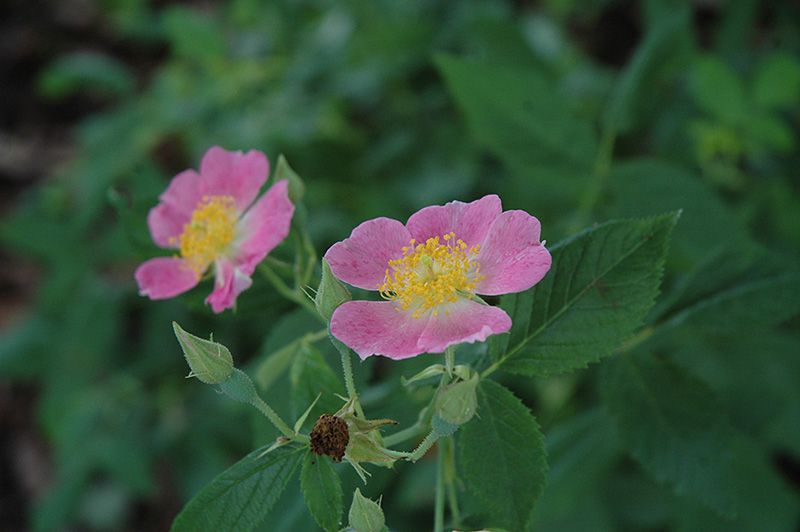Plant Finder
Height: 12 feet Spread: 3 feet
Sunlight:
Hardiness Zone: 5b Group/Class: Climbing Rose Description: This variety is a native woody vine that acends 3 feet and arches downward if not supported; pink single flowers appear in early to mid-summer followed by bright red hips that persist until winter; great on a trellis or wall Ornamental Features Climbing Wild Rose features showy clusters of lightly-scented pink flowers with gold eyes and white centers along the branches from early to mid summer. The flowers are excellent for cutting. It has emerald green deciduous foliage. The oval compound leaves do not develop any appreciable fall color. Landscape Attributes Climbing Wild Rose is a multi-stemmed deciduous woody vine with a twining and trailing habit of growth. Its average texture blends into the landscape, but can be balanced by one or two finer or coarser trees or shrubs for an effective composition. This woody vine will require occasional maintenance and upkeep, and is best pruned in late winter once the threat of extreme cold has passed. It is a good choice for attracting bees to your yard. It has no significant negative characteristics. Climbing Wild Rose is recommended for the following landscape applications; Planting & Growing Climbing Wild Rose will grow to be about 12 feet tall at maturity, with a spread of 3 feet. As a climbing rose, it can be leggy near the base and may be concealed by underplanting with lower-growing facer plants. It should be planted near a fence, trellis or other landscape structure where it can be trained to grow upwards on it, or allowed to trail off a retaining wall or slope. It grows at a fast rate, and under ideal conditions can be expected to live for approximately 30 years. This woody vine should only be grown in full sunlight. It does best in average to evenly moist conditions, but will not tolerate standing water. It is not particular as to soil type or pH. It is highly tolerant of urban pollution and will even thrive in inner city environments. This species is native to parts of North America.![]()
![]()
![]()
![]()
![]()
![]()
![]()
![]()
![]()
![]()
.png)
